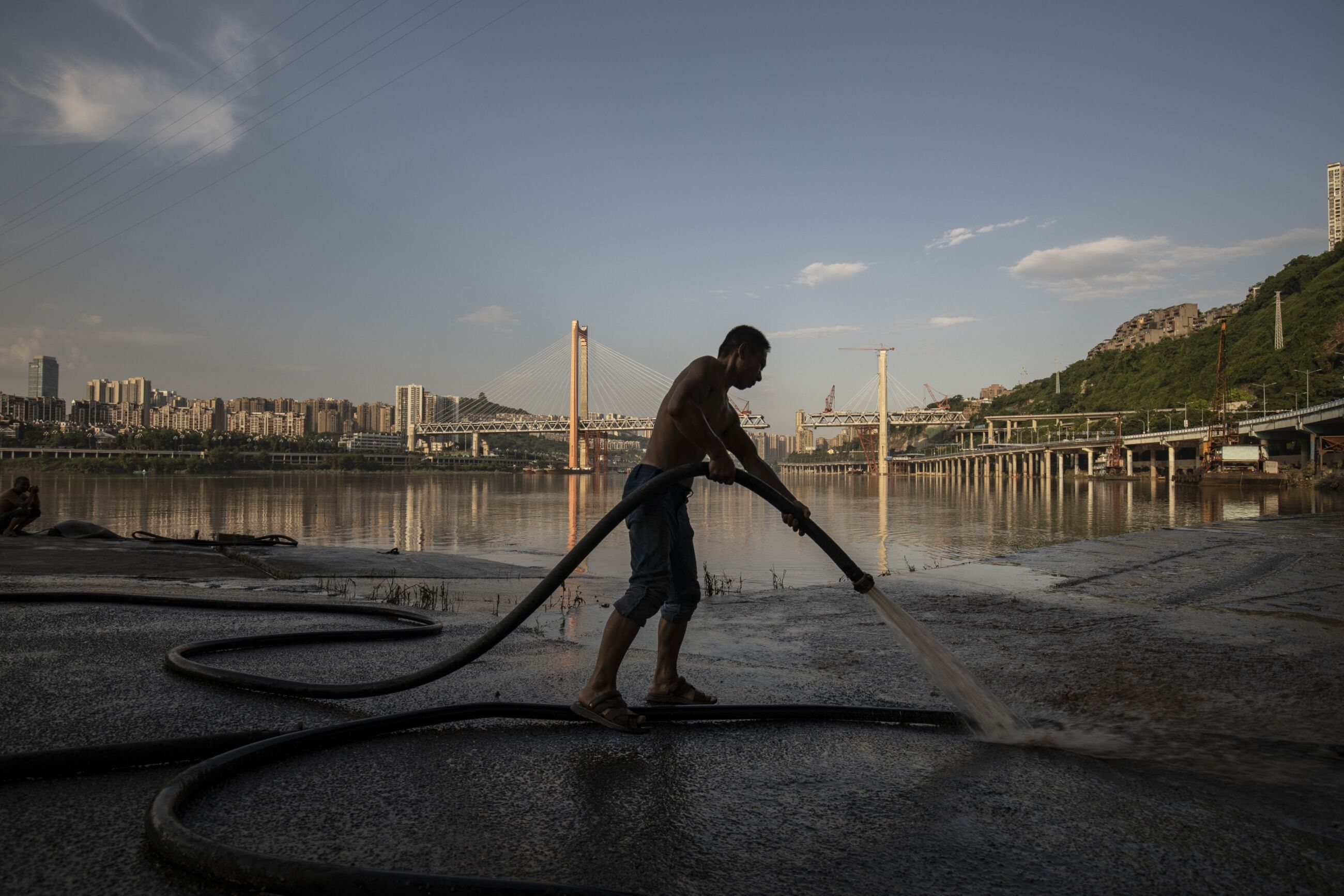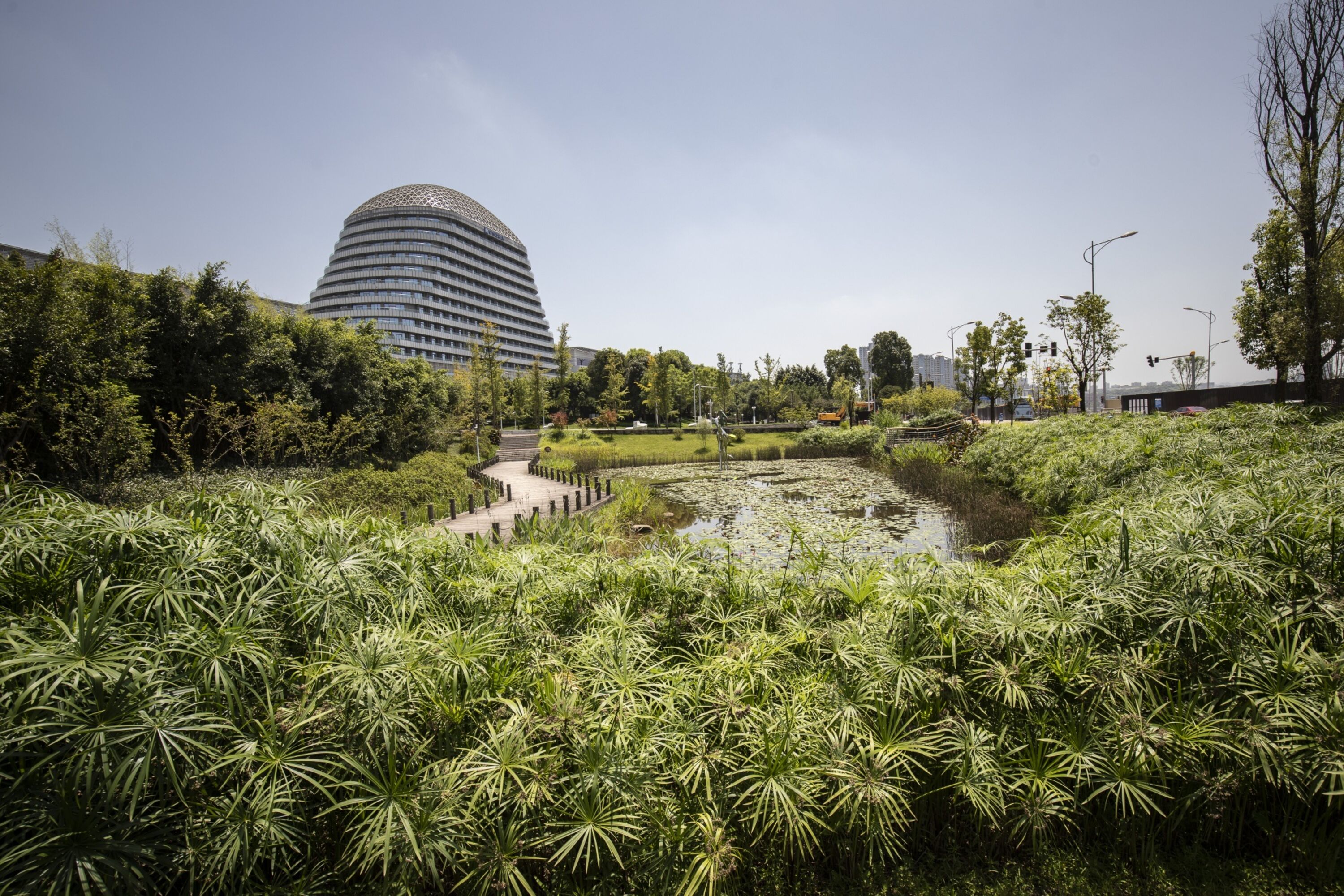In Chongqing’s ramshackle neighborhood of Old Street, down by the Yangtze River, shopkeeper Liu cleans up the mess from last month’s floods. She lines up dozens of pairs of sodden, mud-caked shoes on the pavement outside, appealing hopefully to a passer-by, “I will sell at any price.”
The pedestrian moves quickly on and Liu is left to rue a curse that besets China almost every year, costing millions of dollars in damage and, in bad years like this one, hundreds of lives — the failure to prevent its rivers from overflowing.
“None of us expected the flood to be so serious,” said Liu, 63, who like many Chinese citizens, only gave her family name. “I was standing at the window of my home not far from here watching the floodwaters rising. There was nothing I could do except worry.”

For centuries, China’s response to its unruly rivers has been to try to restrain them with levees, dams and canals to “make the high mountain bow its head and make the river yield its way,” as Chairman Mao Zedong put it. China’s National Climate Center has records of natural disasters going back 500 years, and in almost every one of them there was a major flood. Yet the rivers continue to burst and China’s rapid urbanization is making things worse. Former flood plains have become houses and factories, protected by ever-higher embankments.
So the government is trying a new approach.
On the northeastern fringe of Chongqing, around the giant new international exhibition center, the rising district of Yuelai is designed as a “sponge city.” China’s cities flood partly because most of the water-retaining land that used to absorb rainfall — grassland, woods and lakes — has been paved over, forcing rain to flow directly into poorly built or outdated sewage and drainage systems that can no longer cope.

The “sponge city” initiative, launched in 2015, is an attempt to reverse that — soak up heavy precipitation and release it slowly into the river and reservoirs. Using features such as rooftop gardens, scenic wetland parks, permeable pavements and underground storage tanks, the plan is to eventually absorb or reuse 70% of the rainwater that falls on four-fifths of China's urban land.
“We need to give the space back to the water,” said Yu Kongjian, professor of landscape architecture at Peking University. “We should treat water as a valuable resource, not our enemy.”
Yuelai is one of the pilot sites approved by the central government. Its Exhibition Center Park is set lower than the surrounding ground to collect rainwater, which is filtered by layers of aquatic plants. Rain falling on rooftops is diverted to nearby parks, sidewalks are made of absorbent materials.

While Liu and her fellow shopkeepers in the old city were cleaning out silt-filled stores, in Yuelai, on the banks of the Jialing River, there was little sign of inundation. Among tended lawns and newly paved roads, workers place the final touches to buildings that will be part of a new business district. On the roofs of restaurants and shops behind the exhibition halls, three laborers cut the grass on a rooftop garden that’s designed to soak up rain.
It seems like a positive sign for Chongqing, built among mountains where two major rivers meet — the Jialing and the Yangtze, which has had more money spent on preventing flooding than most. Chongqing is at the top of the 600 kilometer long reservoir created by the $24 billion Three Gorges Dam, China’s largest single flood-mitigation project. Completed in 2006, the dam generates 22.5 gigawatts of power, but its primary role was to regulate the annual flooding of the Yangtze.

A museum in Chongqing commemorates the 1.4 million people who were forced to leave homes that were flooded by the project, “a witness of Chinese people making personal sacrifices for the good of the motherland,” said the museum’s guide. A picture on the wall shows an old man handing his son a young Huangjue fig tree to plant in his new home, 1,500 kilometers away, to remember his roots.
Each spring, the reservoir’s vast lake is lowered to accommodate the summer rains and prevent floodwaters from inundating cities downstream like Wuhan. The dam was designed to regulate floods so large they only occur once in 10,000 years, but within a decade of its completion, Wuhan, downstream of the barrage, was inundated again as the Yangtze burst its banks.
“Three Gorges Dam can hold a lot of water but not the entire Yangtze”
Wuhan was once known as the “city of 100 lakes,” a reference to its giant flood plain which used to absorb the river’s annual floods. About three-quarters of those lakes were filled in for construction in the past thirty years.
“China has lost most of its natural wetlands along the Yangtze River, so there’s no place for the water to go,” said Jennifer Turner, Director of the China Environment Forum at Wilson Center based in Washington, DC.
This year, the city that was the genesis of the global coronavirus pandemic was hit again.
Dams “may be useful for controlling floods in normal years but not years like this,” said Darrin Magee, professor of environmental studies at Hobart and William Smith Colleges in New York, who predicts the flooding will probably get worse due to climate change. “Three Gorges Dam can hold a lot of water but not the entire Yangtze.”

The government and the dam’s operator have said that the flooding downstream would have been worse without the dam as the volume of water released from the reservoir was less than the amount of water flowing in.
As the floods swept across southern China in July, the National Development and Reform Commission promised to spend another 1.29 trillion yuan ($184.38 billion) on 150 major “water projects” in the next few years — normally a reference to more dams, reservoirs and dikes. The banks of the Yangtze and its tributaries now have an estimated 34,000 kilometers of levees, more than the length of the Great Wall of China. While the policy has helped save lives, flooding remains China’s biggest natural headache. Between 1950 and 2018, more than 280,000 people died and 9.6 million hectares of crops were lost due to floods.

Yu at Peking University said the top leadership has realized the need for a greener approach but it’s difficult to change the long-embedded practices at a provincial level. “It’s a long process to change people’s belief that bigger means better,” he said.
Big economic and environmental strategies dictated by Beijing tend to get corrupted as they filter down to local government level, with provincial officials and companies using the political endorsement and government money to pursue their own agendas. Developers portray potential projects as efforts to implement Beijing’s agenda in order to gain rapid approval for new construction.
Near the five star Wyndham Hotel in Yuelai, bulldozers and cranes flatten land that was previously tree-covered hills, one of dozens of new development projects in the new towns that have sprung up on the edges of Chongqing.

“The developers cut down the forest and destroy the grass, build houses, and then plant decorative trees so it becomes a ‘sponge city’ and they make a bunch of money,” said Zuo, a taxi driver in Chongqing who also would only give his family name.
And once the money is spent and the new developments built, there’s often little incentive to maintain the original program. In one of Yuelai’s earliest sponge projects, a rainwater-collecting garden is filled with rubbish and wild grass has overgrown the plants designed to purify the rainwater.
It’s also hard to “green” cities retroactively. Most of China’s sponge city projects are in new suburbs. Chongqing says they now cover 40 square kilometers of the municipality, but in communities like Old Street few people have even heard of the term. “It’s much more difficult to fix the existing problems in the old sector of cities that are populous and badly planned.” said Yang Peifeng, professor of urban planning and architecture at Chongqing University.

Yet China’s sponge city initiative is a sign that the tide in China is turning and that development at all costs is becoming less acceptable to the nation’s citizens.
“I would love to see people just leave the nature alone of course, but it’s not realistic to stop development in China right now,” said Yu Jianfeng, founder of Chongqing-based pressure group the Public Culture Center of Environmental Protection for Rivers. “But at least sponge cities give the urbanization some rules and restrictions.”
— With assistance by Sharon Chen, Karoline Kan, Low De Wei, and Kevin Dharmawan